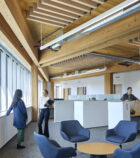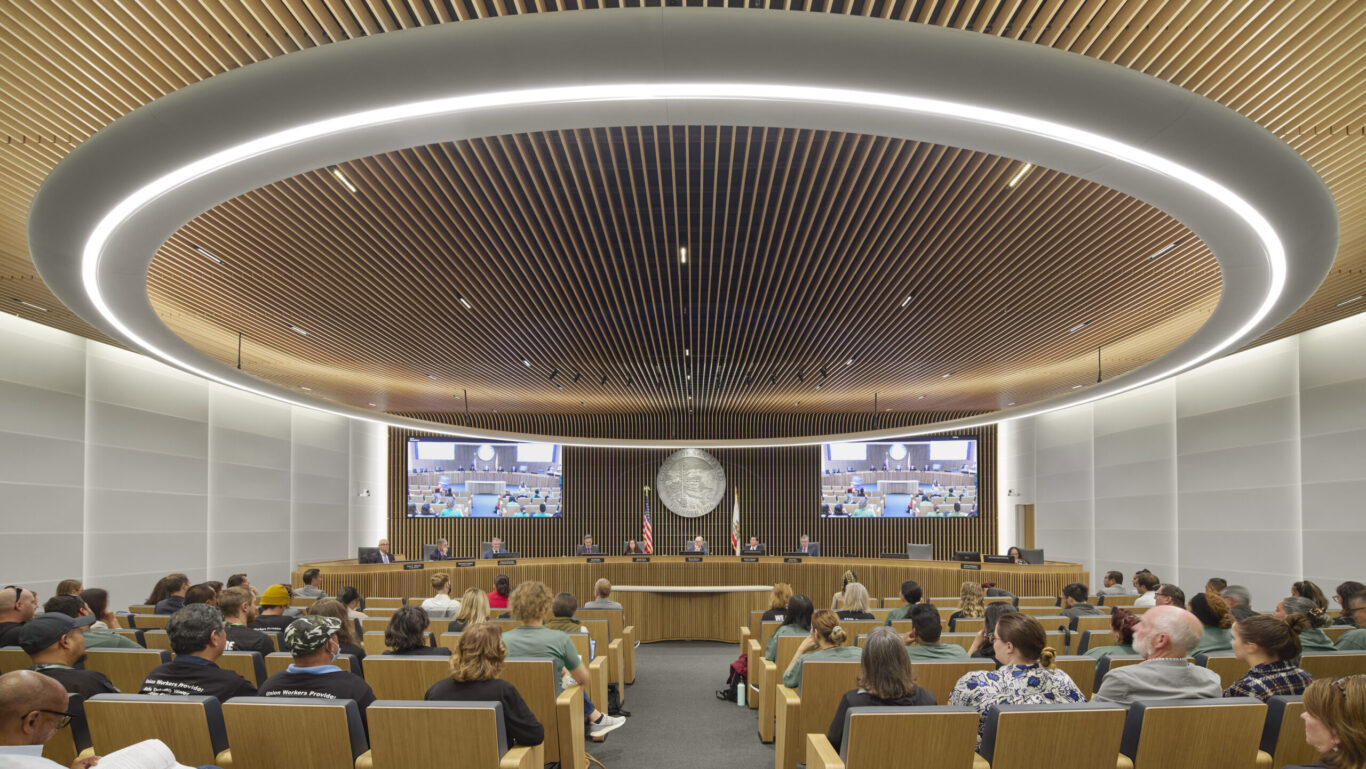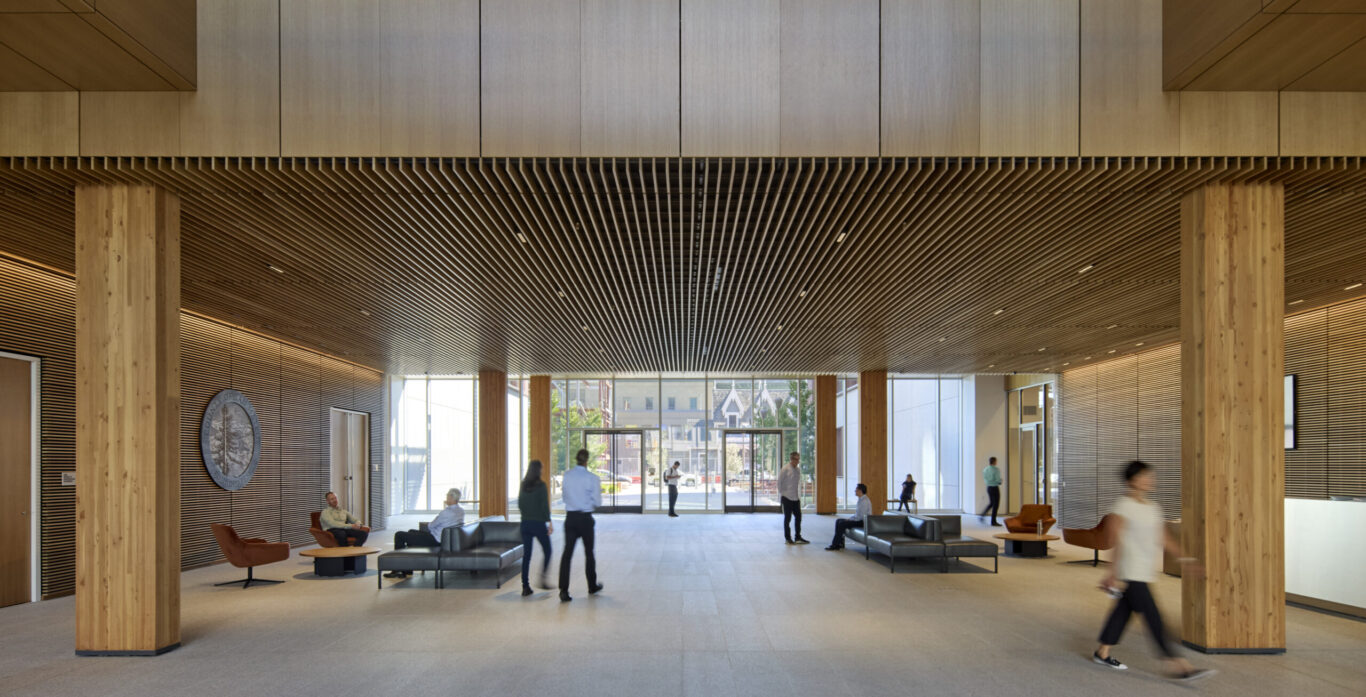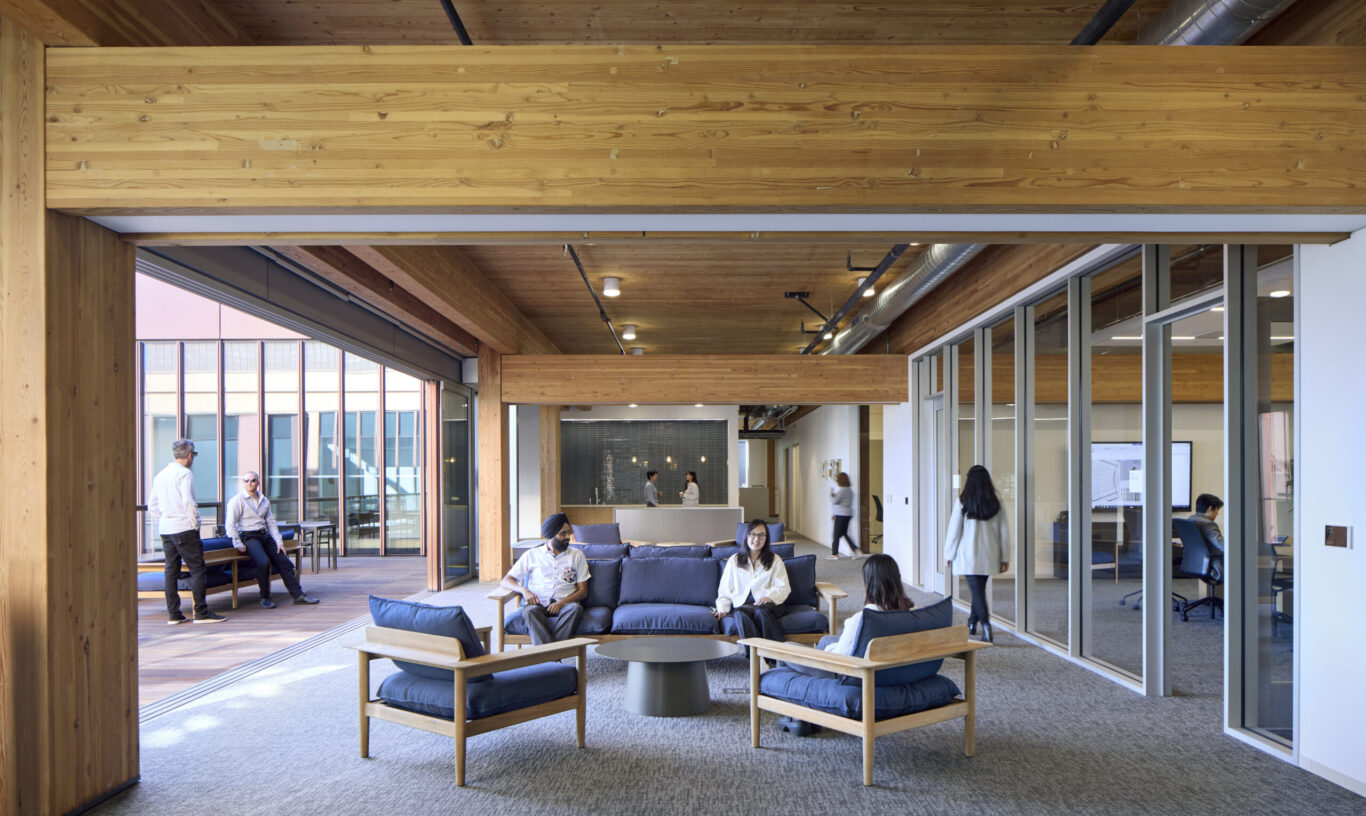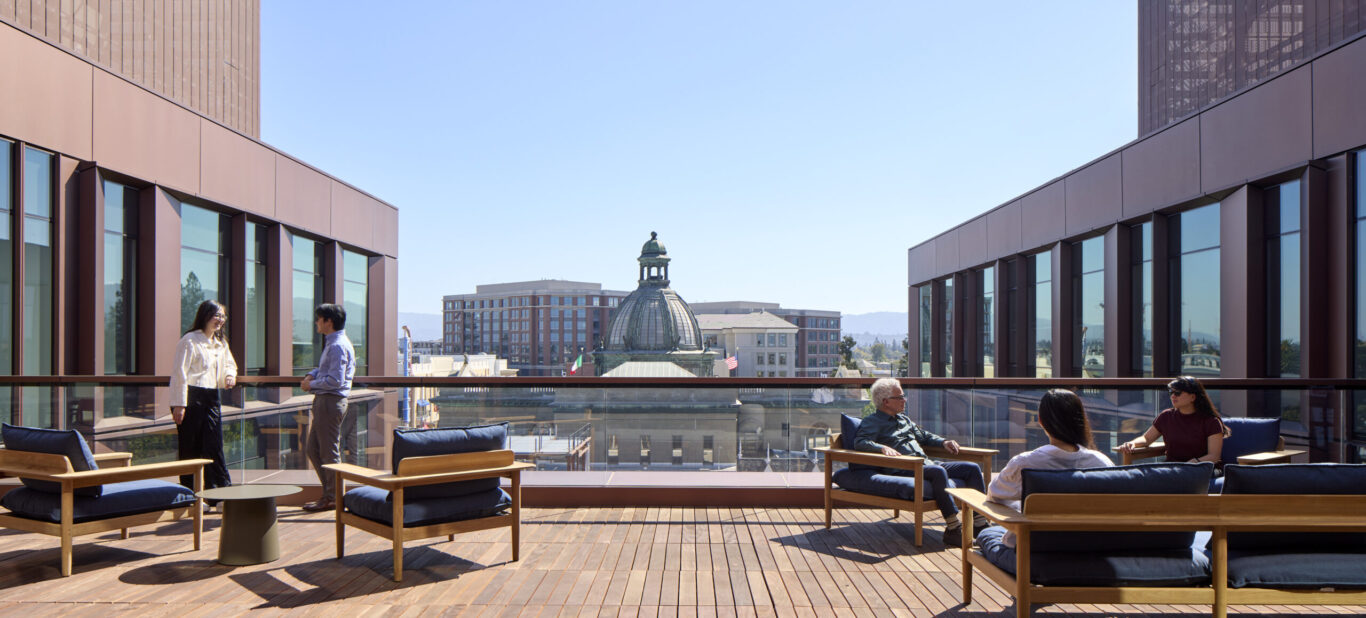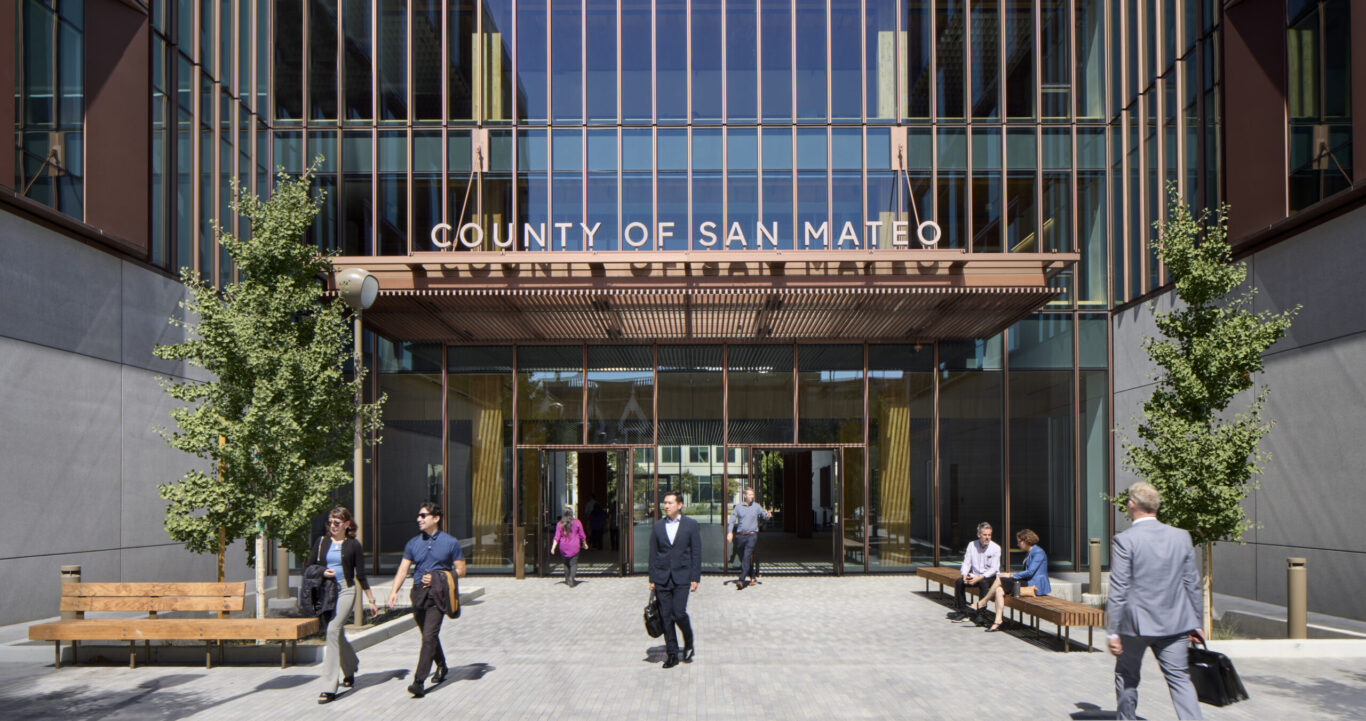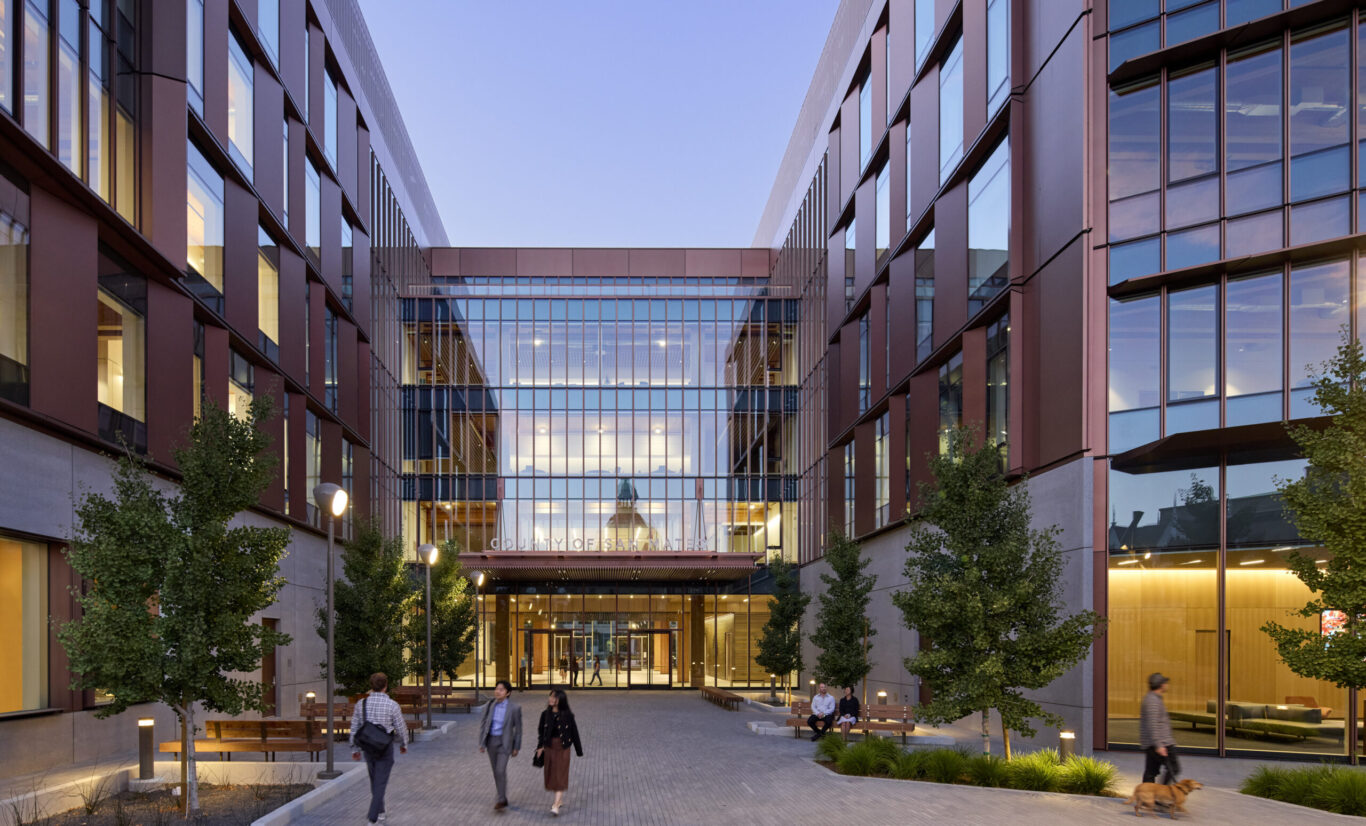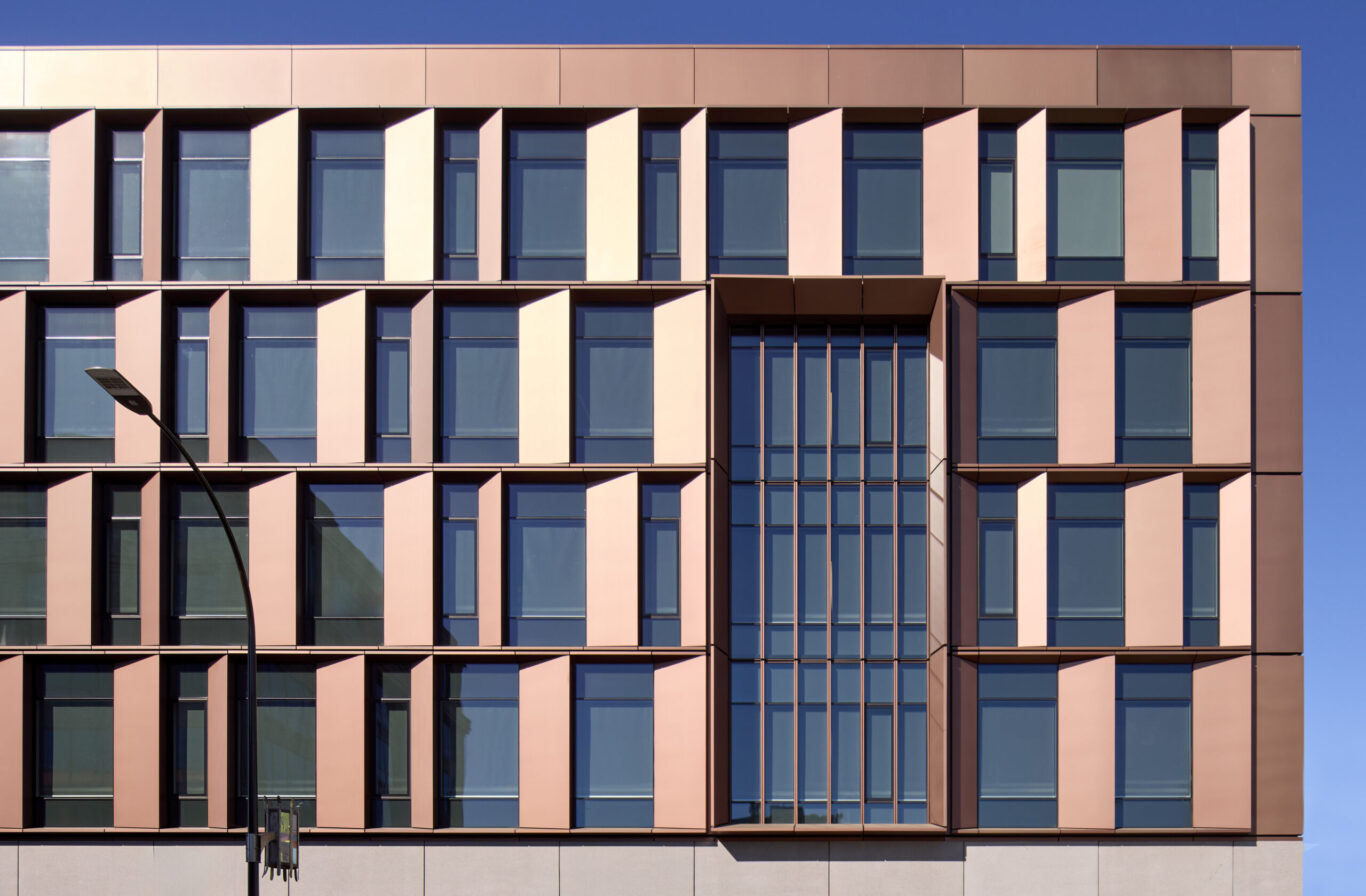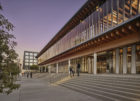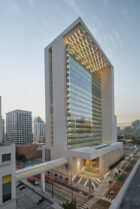Demonstrating civic leadership through design
When San Mateo County leaders approached SOM to design a new county headquarters, they had ambitious sustainability goals. Climate leadership is needed now more than ever, and this county on the San Francisco Peninsula is particularly vulnerable to the perils of climate change, including wildfire, drought, and sea-level rise. County leaders were also cognizant of the symbolic weight and long-term impact that this building will have. Civic buildings are built to endure for generations, and when purposefully designed, these structures can convey a municipality’s values, identity, and aspirations. With its use of cross-laminated timber to reduce embodied carbon, and an efficient design that targets net zero energy in operations, 500 County Center stands as a testament to San Mateo County’s environmental stewardship.

